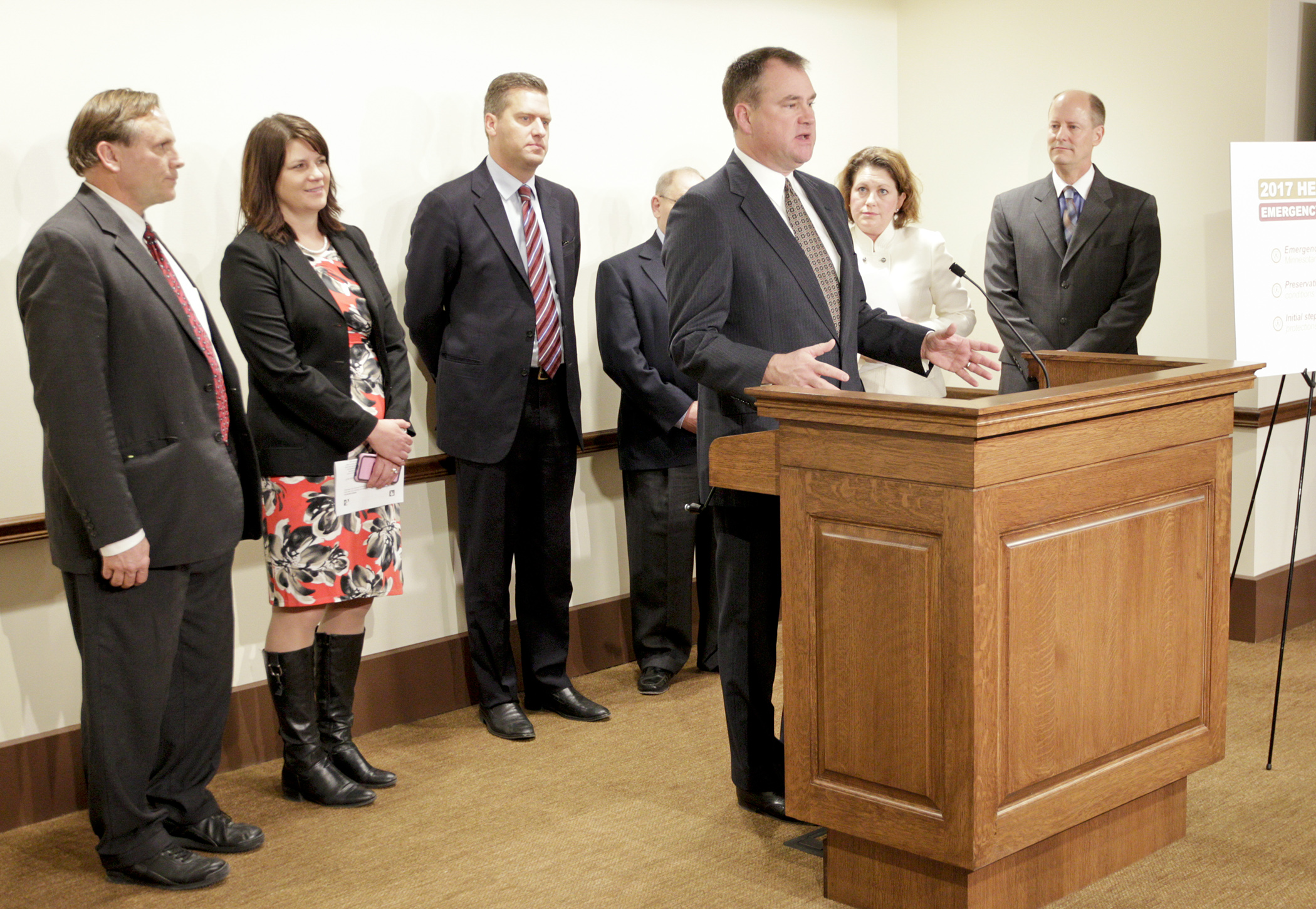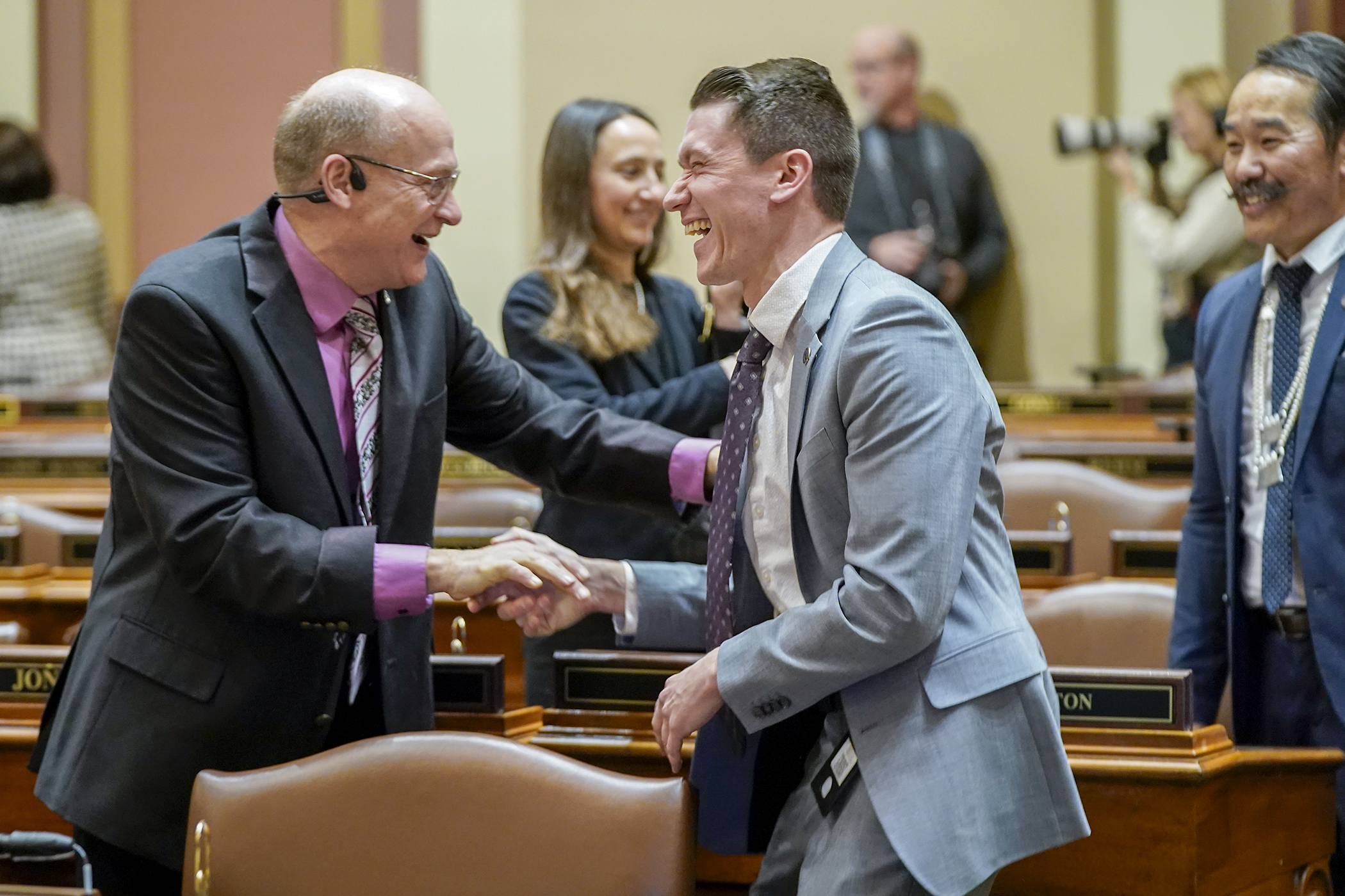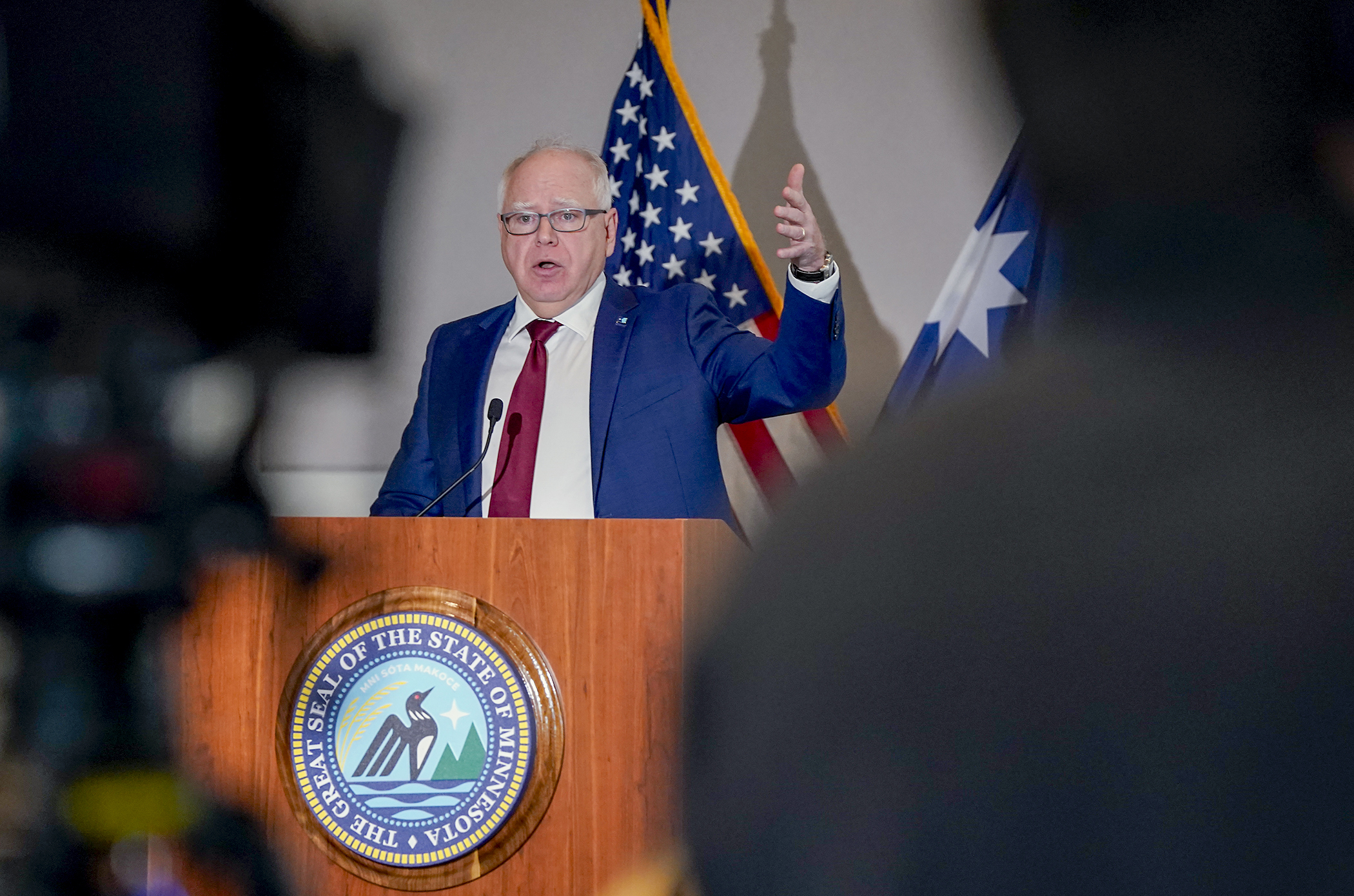Republicans announce health care premium relief proposal, reforms

Republican lawmakers on Thursday unveiled a wide-ranging health care package they consider a top priority for the 2017 legislative session, along with pledges to move quickly on its passage, hoping to provide immediate relief to Minnesotans facing a health insurance crisis.
Under HF1, sponsored by Rep. Joe Hoppe (R-Chaska), the state would fund $300 million in health care premium relief, including $15 million to insurance carriers to cover the immediate costs of certain patients. Other reforms would include expanding access to insurance options by allowing for-profit entities to enter into the state-run marketplace that is currently dominated by nonprofit carriers and a provision to reduce stop-loss attachment points – a reform Republicans say will help small businesses.
Funding would come from the state’s budget reserve. “We call it the rainy day fund,” Hoppe said. “For a lot of people in Minnesota, it’s raining.” Relief would be administered monthly by Minnesota Management & Budget on a sliding scale based on income.
Vowing to act quickly on the so-called “2017 Health Care Emergency Aid and Access Act,” House Speaker Kurt Daudt (R-Crown) ensured its passage by the end of next week.
Three hours later, Daudt and 74 other Republicans were unsuccessful in suspending the House rules in an attempt to pass the measure. They needed a two-thirds majority: 90 votes.
WATCH Thursday's House/Senate Republican news conference on health reform proposals
Republican leaders in both bodies said they intend on first pushing the bill through the House, sending it to the Senate and then using a conference committee – with an invitation to the governor – to iron out any differences.
“We’re going to move very quickly on legislation to help Minnesotans out,” Daudt said. “What we learned in the last election is that the number one issue Minnesotans care about right now is the health insurance crisis that Minnesotans face.”
Senate Majority Leader Paul Gazelka (R-Nisswa) said his chamber would work slower and he wants to include Senate Minority Leader Tom Bakk (DFL-Cook) in as many talks as possible. Sen. Michelle Benson (R-Ham Lake), the bill’s Senate sponsor, added that two Senate committees would hear the bill before the full body takes an up-or-down vote.
“We all recognize that this is a crisis, providing that relief,” Gazelka said. “We agree that’s important to get some of those reforms as well. I don’t want to do anything to slow down the process. … We know that for it to happen, we have to be in agreement with the governor.”
The announcement comes two days after the Legislature opened for business, when Daudt told Minnesotans his aim was to get the bill “off of the House floor” by next week. It also comes on the heels of months-long back-and-forth between Daudt, Gov. Mark Dayton and Bakk – three men tasked with negotiating a special legislative session – on how to address rising health care premium concerns.
The governor on Tuesday outlined his intentions of reducing health care premiums by 25 percent through additional subsidies. In his announcement, Dayton urged legislators to pass his proposal by week’s end.
Symbolism of HF1
First bills are usually reserved for what lawmakers see as a centerpiece to the upcoming policy discussions, a formal nod to important legislation.
It’s been 10 years since a health care-related measure topped the House majority’s agenda. In 2007, the House DFL unveiled the “Children’s Health Security Act,” designed to provide health care coverage for all of Minnesota’s children.
Two years ago, House Republicans focused HF1 on economic development and job creation, which included tax breaks for businesses and rural workforce housing incentives.
Previous sessions have featured first bills ranging from income tax and tax reductions (2001-02) to anti-terrorism measures (2003-04), public safety packages (2005-06) and economic recovery (2009-10).
Related Articles
Search Session Daily
Advanced Search OptionsPriority Dailies
Full House convenes for first time in 2025, elects Demuth speaker
By Tim Walker DFL, Republicans convene with a quorum for the first time in 2025 session after agreeing to a power-sharing deal.
DFL, Republicans convene with a quorum for the first time in 2025 session after agreeing to a power-sharing deal.
Walz proposes slimmed-down 2026-27 state budget, sales tax changes
By Tim Walker This is an odd-numbered year, and so the Legislature is constitutionally required to craft a budget to fund the state government for the next two fiscal years.
Gov. Tim Walz...
This is an odd-numbered year, and so the Legislature is constitutionally required to craft a budget to fund the state government for the next two fiscal years.
Gov. Tim Walz...